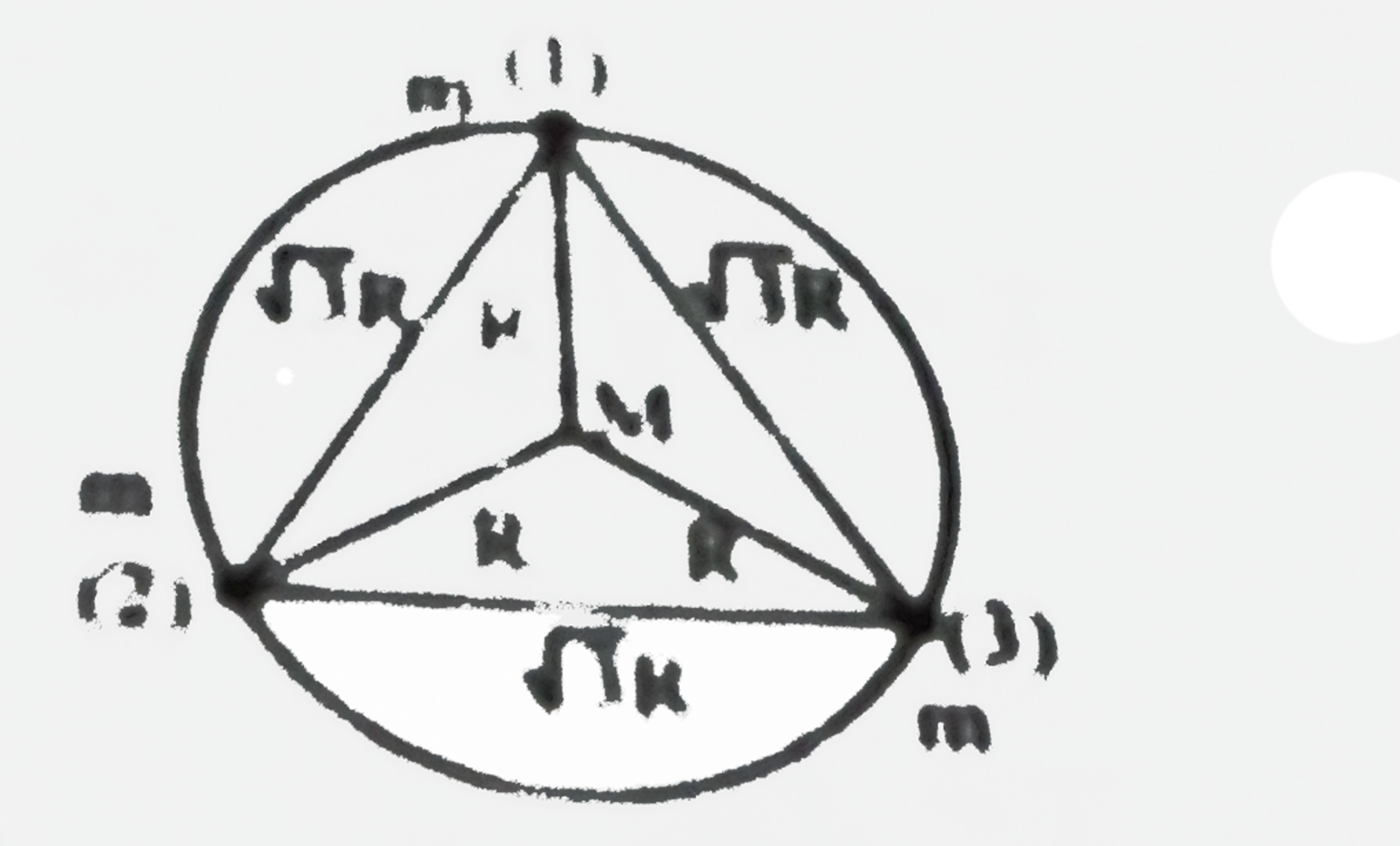A hypothetical planet of mass M has three moons each of equal mass 'm' each revolving in the same circular orbit of radius R. The masses are equally spaced and thus form an equilateral triangle. Find :

(i) the total P.E. of the system
(ii) the orbital speed of each moon such that they maintain this configuration.
The correct Answer is:(i)−3GmR(m√3+M)⎞⎟⎠,(ii) ⎷GR(m√3+M)⎞⎟⎠
(i) U=potential energy of (1) in the fileld M+ potential energy of (2) in filed of [(1)+M]+potential energy of (3) in field of [(1)+(2)+M]
U=−GMmR+m[−GMR−Gm√3R]+m[−GmR−Gm√3R−Gm√3R]
=−2GMmR−3Gm2√3R
=−3GmR[M+m√3]

(ii)FR=FmM+2Fmmcos30∘
FR=GMmR2+√3Gm2(√3R)2
FR=GmR2[M+m√3]
This force will provided required centrepetal force
mv2R=GmR2[M+m√3]
v=
⎷GR(M+m√3)

Similar Questions
A satellite of mass m is revolving in a circular orbit of radius r. The relation between the angular momentum J of satellite and mass m of earth will be -
View SolutionThe satellite of mass m revolving in a circular orbit of radius r around the earth has kinetic energy E. then, its angular momentum will be
View Solution
Knowledge Check
If a planet of mass m is revolving around the sun in a circular orbit of radius r with time period, T then mass of the sun is
A4π2r3/GTB4π2r3/GT2C4π2r/GTD4π2r3/G2T2A sayellite of mass m revolves in a circular orbit of radius R a round a planet of mass M. Its total energy E is :-
A−GMm2RB+GMm3RC−GMmRD+GMmRA planet of mass m is moving around a star of mass M and radius R in a circular orbit of radius r. The star abruplly shrinks to half its radius without any loss of mass. What change will be there in the orbit of the planet ?
AThe planet will escape from the starBThe radius of the orbit will increaseCThe radius of the orbit will decreaseDThe radius of the orbit will not change
Three particles each of mass m are palced at the corners of an equilateral triangle of side b. The gravitational potential energy of the system of particle is
View SolutionA satellite whose mass is M , is revolving in circular orbit of radius r around the earth. Time of revolution of satellite is
View SolutionA satellite of mass M revolving in a circular orbit of radius rs around the earth of mass M has a total energy E. then, its angular momentum will be
View SolutionThree particles of equal mass M each are moving on a circular path with radius r under their mutual gravitational attraction. The speed of each particle is
View SolutionTwo satellite of mass m and 9m are orbiting a planet in orbits of radius R. Their periods of revolution will be in the ratio of
View Solution
